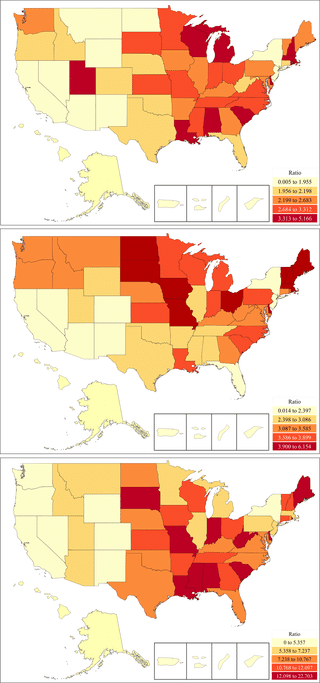
06 Jan Prescription Stimulant Use Varies Widely Across US
MedicalResearch.com Interview with:

Dr. Piper
Brian J. Piper, PhD, MS
Assistant Professor of Neuroscience
Department of Basic Sciences,
Geisinger Commonwealth School of Medicine,
Scranton PA 18509
MedicalResearch.com: What is the background for this study?
Response: The U.S. accounts for five percent of the world population but more than 92 percent of the world’s spending on pharmacotherapies for Attention Deficit Hyperactivity Disorder (ADHD). According to the 2011 National Survey of Children’s Health, ADHD increased to 11.0 percent of U.S. children, seven percent of girls and 15 percent of boys. Interestingly, ADHD rates were much lower among Hispanic children.
The 2013 revision to the Diagnostic and Statistical Manual of Mental Disorders broadened the criteria such that it became easier to diagnose adult ADHD. Together, we hypothesized that use of amphetamine (Adderall), methylphenidate (Ritalin), and lisdexamfetamine (Vyvanse) would be increasing. We also predicted that there would be some regional differences in stimulant use.
MedicalResearch.com: What are the main findings?

Heat map of per capita of amphetamine (A, top), methylphenidate (B, middle), or lisdexamfetamine (C, bottom) as reported to the Drug Enforcement Administration in 2016. Ratio relative to the lowest state (amphetamine = 25.52 mg/capita, methylphenidate = 19.70 mg/capita, lisdexamfetamine = 3.63 mg/capita).
Response: Drug information was obtained from the U.S. Drug Enforcement Administration’s Automation of Reports and Consolidated Orders System (ARCOS) for amphetamine, methylphenidate, lisdexamfetamine, and D-methamphetamine (Desoxyn) for the U.S. for each year from 2006 to 2016. The net total use of the four stimulants doubled from 2006 to 2016 (24 to 48 metric tons). Amphetamine and lisdexamfetamine showed the largest increases. The U.S. population during this time period increased by only eight percent.
There were also pronounced regional disparities with lower use in the Western U.S. States with larger Hispanic populations also used significantly less stimulants.
MedicalResearch.com: What should readers take away from your report?
Response: Stimulants are controlled substances with clear neurocognitive benefits, particularly in the short-term. These drugs are also not without risks.
The figure shows that there are several-fold differences between states in per person use. There was a five-fold difference between the highest and lowest state for amphetamine, six-fold for methylphenidate, and more than twenty-fold for lisdexamfetamine.
MedicalResearch.com: What recommendations do you have for future research as a result of this work?
Response: Although this study shows that stimulant use is clearly increasing, the ARCOS data does not provide any information on the patient characteristics. Are these elevations driven only by increases in adult-ADHD, ADHD in young women, or are some of these changes due to increased usage among preschoolers or for stimulant use for other indications like obesity, cognitive enhancement in non-ADHD populations, or Binge Eating Disorder?
MedicalResearch.com: Is there anything else you would like to add?
Response: This research did not address whether stimulants are being underutilized in the U.S. Territories or over-utilized in the Northeast. The U.S. Drug Enforcement Administration makes information about controlled substances in the U.S. publicly available. It continues to be surprising that others are not doing these types of studies. ARCOS is a valuable resource for health policy and pharmacoeconomics research.
Any disclosures?
The authors have no relevant disclosures
Citation:
Trends in use of prescription stimulants in the United States and Territories, 2006 to 2016
Brian J. Piper ,Christy L. Ogden,Olapeju M. Simoyan, Daniel Y. Chung,
James F. Caggiano, Stephanie D. Nichols, Kenneth L. McCall
Published: November 28, 2018
https://doi.org/10.1371/journal.pone.0206100
[wysija_form id=”3″]
[last-modified]
The information on MedicalResearch.com is provided for educational purposes only, and is in no way intended to diagnose, cure, or treat any medical or other condition. Always seek the advice of your physician or other qualified health and ask your doctor any questions you may have regarding a medical condition. In addition to all other limitations and disclaimers in this agreement, service provider and its third party providers disclaim any liability or loss in connection with the content provided on this website.
Last Updated on January 6, 2019 by Marie Benz MD FAAD
